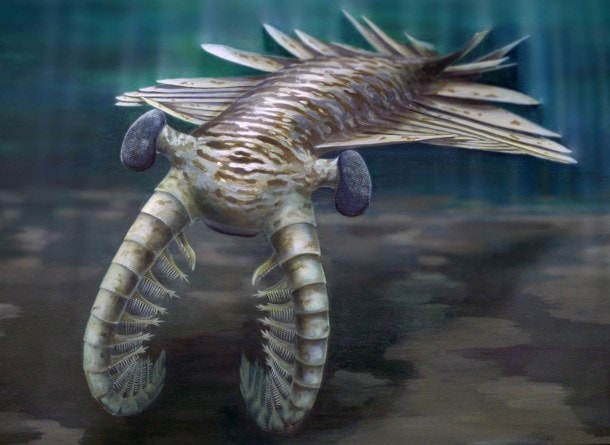Barry Coulter
Half a billion years ago, Anomalocaris was the terror of the local seas.
On July 21, the Cranbrook History Centre and Dr. Jean Bernard Caron discussed the results of a discovery in the Fort Steele neighbourhood, and a significant addition to the local fossil record, at the third installment in the CHC’s public lecture series on local paleontological heritage
Dr. Caron, a renowned paleontologist with the Royal Ontario Museum, returned to Cranbrook last month to follow up on the previous Fort Steele expedition. Along with Dr. Bob Gaines, Dr. Mark Webster and Dr. Gabriela Mangano, Dr. Caron’s team looked at previously discovered species and possible new species in the Fort Steele area — already renowned for its beds of trilobite fossils — and assessed possible soft bodied created indigenous to this area during Cambrian times.
Anomalocaris propelled itself through the water by undulating the flexible lobes on the sides of its body, but one of its fascinating features is its eyes. Findings have indicated that advanced arthropod eyes able to “tell friend or foe and detect features of the environment” had evolved very early, before the evolution of jointed legs or hardened exoskeletons. The eyes were 30 times as powerful as those of trilobites, long thought to have had the most advanced eyes of any contemporary species. With 30,000 lenses, the resolution of the three centimetre-wide eyes would have been rivalled only by that of the modern dragonfly, which has 28,000 lenses in each eye [information gathered from Wikipedia].
Varieties of Anomalocaris have been discovered at the famed Burgess Shale. Dr. Caron is still working on correlating the relationship between the Burgess Shale and Fort Steele Anomalocari — to determine what transition factors or evolutionary processes are between them.
In the meantime, Anomalocaris Canadensis will be a star attraction at the CHC’s coming paleontological gallery.
